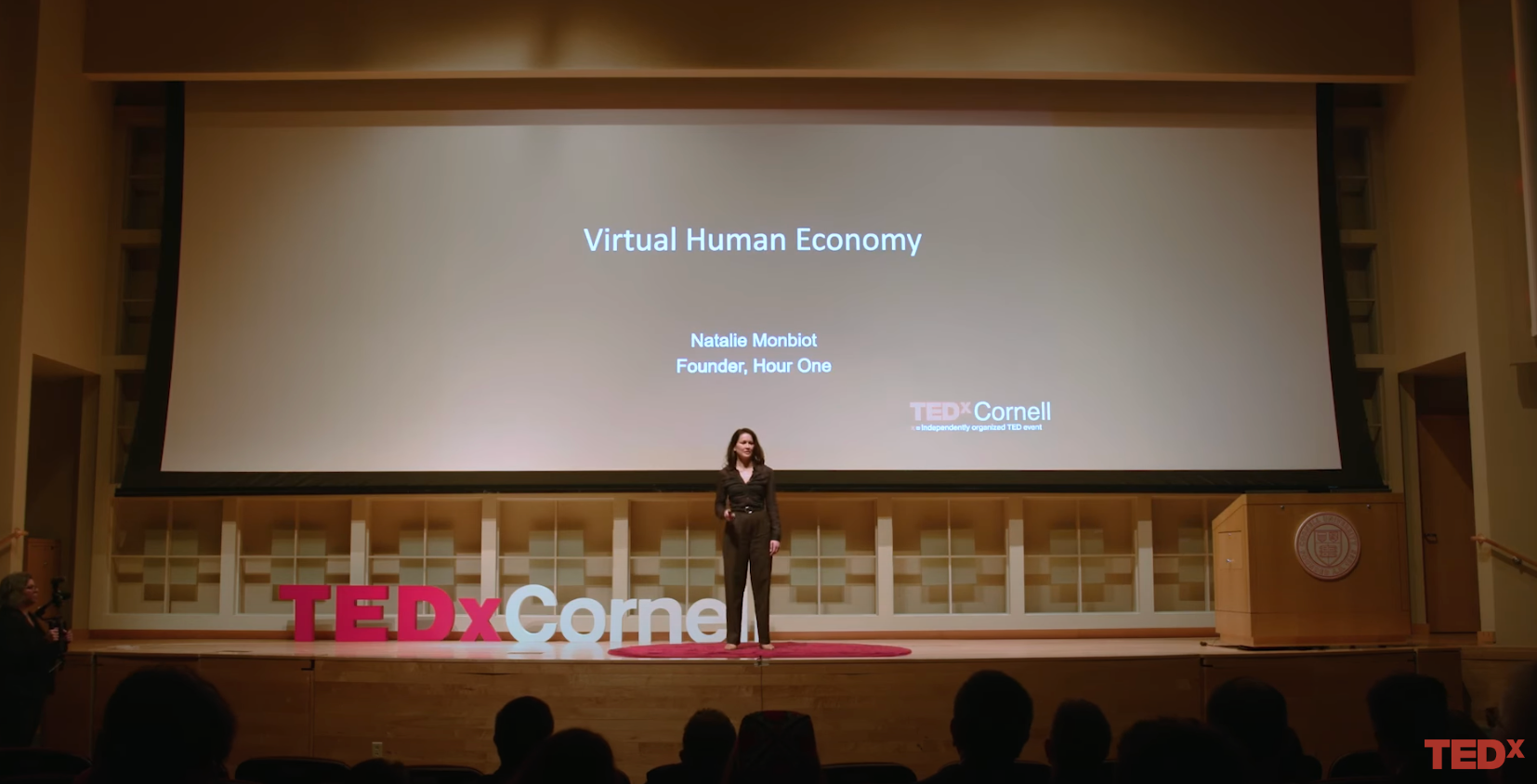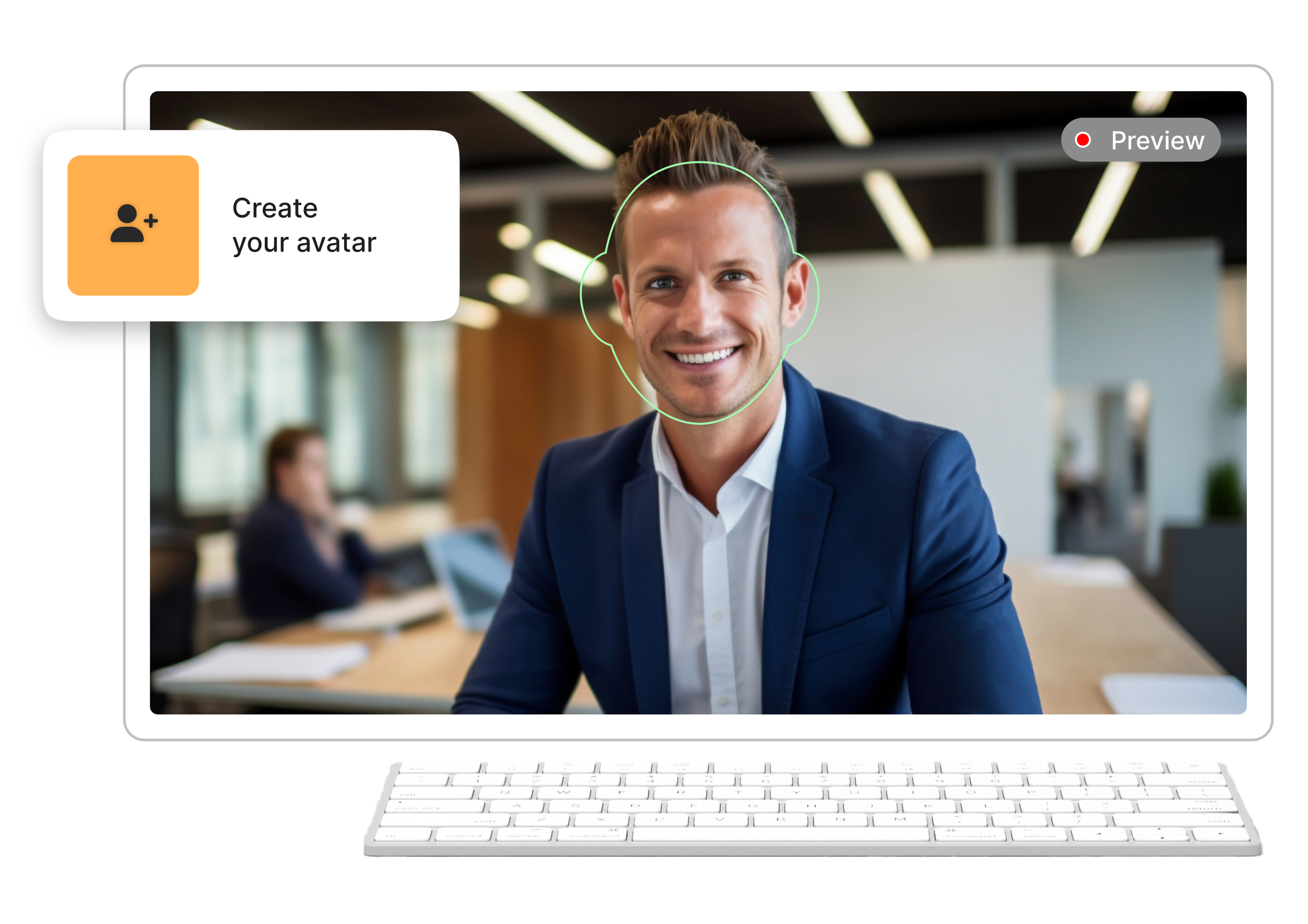Since the COVID-19 global health crisis, the change in work landscape has become undeniable. Remote and hybrid work models, digital delivery, technological advances, increased globalization, and changes in how we interact and share have rapidly become workplace norms.
Now, its the turn of new economic pressures to shape our workday. With talk of recession, tightened economics, and regular interruptions to the supply chain, the ‘rhythm’ we once associated with the working environment is tittering. Luckily, these quick changes have resulted in more exciting technological developments affecting our day to day. But what do these rapid shifts mean for the future of work?
One hot arena is the use of video to establish a personal connection with people who are physically separate from their primary work team, especially for training and onboarding new team members, as well as upskilling existing staff. With advances in AI technology finally paying dividends for employers, there’s a lot to be excited about.
Today we take a look at what all this means for the new work generation, and how leveraging it early can help your own business thrive.
Reimagining the Future of Work
While it’s odd to view any pandemic through a positive lense, necessity is still the mother of innovation — and in the workplace, it’s no different. Even organizations that somehow managed to avoid digital transformation until then, were forced to embrace changes on a large scale or risk closing their doors for good. Even considering some ‘return to the office’ pushes from some companies reluctant to accept the changes, we’ve witnessed a concurrent change in how employees want to work.
People have come to realize that their productivity levels while working remotely easily rival (or even surpass) those of the office environment. Commuting is now seen as a waste of time, and employees want supportive employers who understand that a work-life balance is critical for their happiness and sustained work output.
In particular:
- Over 54% of employees prefer some type of hybrid or remote work setup
- 60% of managers support this remote work model for boosted productivity
- Employers place employee empowerment and well-being in the top 3 most important development areas
- Productivity typically remains the same, while some industries have seen a 13% improvement in productivity, with remote work models
Over 95% of workers would take a moderate pay cut in exchange for the option to work from home, and not solely from an office. With up to a quarter of the workforce in developed countries already working remotely by default, we’re seeing four to five times as much remote work than as recently as 2019. Of course, such a rapid mental and physical shift comes with its challenges: 71% of employers report struggling to adapt their workplace and industry to the new digital environment, with particular concerns around upskilling, training, onboarding, and retaining company culture.
Digital transformation is up to three times more effective in workplaces that can communicate seamlessly and with precision. The primary pain points relate mostly to how they communicate with people miles. Which methods, and what tools?
In particular, office communication in a world where your manager and coworkers aren’t right next door can be challenging. For employers, concerns over employee training, learning and development, and other issues remain top of the list. Negotiations, business decisions, collaborative brainstorming, and even feedback and employee empowerment are a lot tougher on the remote model. Some have fears about career progression and their ability to develop skill sets. Did you know that simply ‘hunting’ for information can eat up around 3 hours of an employee’s productivity? That’s a lot of lost work each week.
Likewise, there’s a perceived communication gulf between management and staff that widens as the workforce continues to globalize. Staff want to feel empowered and “in the loop” of company happenings, even if they aren’t on-site. A staggering 85% of employees report feeling happier and more motivated when they feel part of the company’s landscape.
How Video Can Help Change the Future of Work for the Better
The boom in video as a content marketing tool has been something of a side story in the wider workplace shift, but is now having its unprecedented heyday. Video, above any other communication type, has the key advantages of disseminating lots of information in a very accessible format, while still retaining a sense of human connection that’s near irreplaceable in how we communicate with each other.
Aware of this, many businesses at the forefront have already embraced video and incorporated it into its broad and long term strategy. The businesses that want to conquer their respective economic landscapes must accept that video has become so much more than a marketing gimmick, and major innovations for business application are still ahead for this medium.
Why Video Speaks to Us in the Workplace
We believe that the future of smart video development is the key to our working futures, but what gives it this prominence?
- Time-Saving: Video imparts more information with less effort. It doesn’t need the immediate interruption of a phone call or meeting, but has immediacy and can be created to give information fast.
- Cost-Effective: Shifts in the economic environment push employers to seek cost-effective ways to impact. Video provides an economical communication model that’s cheaper than in-person meetings, while retaining intimacy and personal touch. And with the growth in things like AI video tools and virtual humans (avatars), remote learning and other development are cheaper and more effective than ever before.
- Non-Ambiguous: Unlike text and other communication mediums, video is efficient at delivering a clear message, complete with the non-verbal communication cues (tone of voice, body language) that humans rely on to establish connection, authority, and clarity. This helps with knowledge retention and trust.
- Personal: Digital communication, in general, suffers from a lack of human connection which modern video technologies can bring it back.
- Security: Though still an underappreciated tool for learning and development, video is more secure than many other formats. With the addition of new video-focused cybercrime tools — from IP whitelisting to single sign-ons — it’s far easier to secure video and ensure your organization stays safe as well as efficient.
With this in mind it’s easy to see how, of all communication formats, video has the power to positively shape the workplace of the future.
How AI Reinvents Video
Despite these format’s advantages, getting your senior team members, corporate trainers, and other parties in front of a camera can prove logistically difficult to say the least. Especially in joint-department issues, or other situations in which several trainers or key members of the workforce don’t reside in the same location.
For these, another major technological development can be brought into play: Artificial intelligence (AI) I has progressed leaps and bounds during the COVID-19 pandemic, to the point where virtual humans can bridge the gap in improved communication — without the logistical hassles of creating videos with team members. What can virtual humans bring to the table that relying on real humans can’t? Let’s take a look:
- Cost and Time-Effective: There’s a critical economic factor to the use of AI. Most modern AI video generators work off of a preset script, allowing you to quickly generate compelling and engaging videos in minutes at a fraction of the cost of developing the same video with competing ways
- Adaptable: As a result of this fast visualization-to-content cycle, you can now easily edit, adapt, update, and expand your training materials and learning and development library. And so, with just a few clicks, you can keep lessons relevent and fresh, ensuring staff is always progressing and kept up to speed.
- Scalability: Closely linked to this, AI gives video content the scalability you need to present solutions quickly and efficiently. Want to release the same video with different endings, characters, or even in an entirely different language? Just a few clicks and its ready.
- Personalization: Since you’d have the freedom to create comparable videos at the click of a button, you have the option to better personalize the training environment for your staff. Be it by location, or by using virtual human demographics that better connect with the target audience, you can ensure a human connection to your video content in ways previously impossible.
Areas Where Video Outperforms
As such a highly adaptable format, video can be used effectively in most aspects of the modern workplace. However there’s a few areas where it has particularly great potential to revolutionize how we train, interact, and connect with a remote workforce.
Interactions with Front-End Departments
For those involved in customer experience and sales, the remote work environment can be challenging. Since video is scalable and retains a personal sense of connection, you can effectively leverage video to bridge a gap. Wether it be connecting directly with customers, training your sales team, updating them on new targets, and keeping them “on the ball”, video is an efficient and adaptable medium.
Onboarding, Training, and Career Development
As pointed out, a key concern for many employees in the remote work environment relates to how this distance and lack of immediate connection with management might affect their career development. And while lengthy Zoom-style training has been leveraged to some effect, it’sfar from ideal; Chunky training sessions in this format quickly have people mentally checking-out of the learning process and can be inconvenient and non-productive.
In contrast, an agile, scalable, and personable training library powered by AI video allows you to effortlessly keep employee skills up-to-date and create an onboarding learning and development cycle that’s quick, clean, adaptable, and accessible on-demand as needed. It’s now easier to keep everyone on the same page without losing productive hours.
As technology in the workplace rapidly evolves, the ability to train and re-skill staff makes all the difference. When employees feel companies invest in them, employee retention stays high and your business outcomes are met. It’s a win-win for employers and employees alike.
Maintaining Company Values and Culture
On the other side of things, for many employers, a primary concern about remote work is the potential loss of any cohesive company culture — or the inability to form one in the first place. Again, AI videos powered by virtual humans can help employers mitigate the loss of face-to-face bonding over common goals.
An organization’s talent department can develop a mission and vision through video. It’s easy to release quick, accessible updates across the company, without miscommunications introduced to the system. And with AI making video creation simple and cost-effective, you can personalize messages more easily, issue them more frequently, and maintain a cohesive sense of teamwork in play.
Centralized Communication
Using an AI video program, especially for upskilling, reskilling, and training, allows you to standardize and centralize information staff is receiving effortlessly. No more broken telephone miscommunication chains. No more inconsistent training as different team leaders use different tactics. Only a united, clear program that’s immensely deployable, accessible across geographic and time zones, and consistent in its goals.
Let Hour One Take Your Workplace into the Future
Hour One is proud to be the market leader in AI video. With our powerful technology at your organization’s disposal, you can easily boost learning and development efforts without the need for extensive up-front investment or reinventing the wheel.
All you need is a script from your in-house writers, and Hour One’s app pretty much handles the rest. Polished, virtual presenters will deliver your script in a compelling visual format that gets the point across cleanly, and in a way staff can truly engage with. Cost-effective to use, this scalable and adaptable learning tool that will empower your workplace for the future of digital transformation while ensuring maximal productivity and keeping staff fresh, engaged, and working hard.
Curious to know more about the power of Hour One’s AI video tool for your workplace? As the future of work keeps developing, we have your company’s back in creating smart workplace solutions that work for everyone, from your newest staff member to the upper floors of management.









